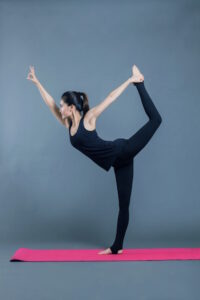
Flexibility is an important component of overall fitness and plays a crucial role in improving posture, enhancing athletic performance, and preventing injuries. Pilates, with its focus on controlled movements, breath, and body awareness, offers an excellent approach to improving flexibility. In this article, we will explore how to effectively incorporate Pilates for flexibility, the benefits of Pilates for flexibility, whether Pilates is a stretching exercise, and the different types of stretching involved in Pilates.
How to do Pilates for flexibility?
Pilates exercises can be modified and tailored to address specific areas of the body that require increased flexibility. Here are some key techniques and exercises to consider when using Pilates for flexibility:
1. Dynamic stretching: Incorporate flowing and controlled movements into your Pilates routine. Perform exercises with a focus on the full range of motion, emphasizing smooth and controlled transitions between positions.
2. Targeted stretching: Identify areas of the body that require increased flexibility, such as the hips, hamstrings, shoulders, or spine. Choose Pilates exercises that specifically target those areas to help improve their flexibility.
3. Lengthening through the breath: Pilates emphasizes the connection between breath and movement. Utilize deep breathing techniques to create length and space in the body during exercises, allowing for improved flexibility.
4. Gradual progression: Start with gentle stretches and gradually increase the intensity and duration as your flexibility improves. Avoid pushing beyond your comfortable range of motion to prevent injuries.
What is Pilates good for flexibility?
Pilates is highly effective for improving flexibility due to its focus on controlled and mindful movements. Here are some benefits of Pilates for flexibility:
1. Increased range of motion: Pilates exercises promote flexibility by gently elongating muscles and joints, allowing for increased range of motion.
2. Improved muscle length: Pilates targets both the major muscle groups and the smaller stabilizing muscles, helping to lengthen and stretch them effectively.
3. Balanced muscle development: Pilates promotes balanced muscle development, which helps prevent muscle imbalances that can limit flexibility.
4. Enhanced body awareness: Through Pilates, you develop a heightened sense of body awareness, allowing you to identify areas of tightness or restriction and work on them specifically.
Is Pilates a stretching exercise?
While Pilates incorporates stretching into its exercises, it is not solely a stretching exercise. Pilates combines stretching with strength-building and body alignment principles to create a balanced and functional approach to fitness. The controlled movements in Pilates help improve flexibility while simultaneously engaging and strengthening the muscles.
What type of stretching is Pilates?
Pilates utilizes various types of stretching to improve flexibility. These include:
1. Dynamic stretching: Pilates often incorporates dynamic stretching, which involves moving through a range of motion with control and fluidity. This type of stretching helps warm up the muscles, increase blood flow, and improve flexibility.
2. Active stretching: Many Pilates exercises involve active stretching, where you use your own muscles to create the stretch. This type of stretching helps increase flexibility while maintaining control and stability.
3. PNF stretching: Proprioceptive Neuromuscular Facilitation (PNF) stretching is occasionally used in Pilates. PNF stretching involves contracting and relaxing muscles to enhance flexibility and range of motion.
In summary, Pilates is a valuable tool for improving flexibility. By incorporating dynamic stretching, targeted exercises, and mindful movement, Pilates helps increase range of motion, improve muscle length, and promote balanced muscle development. While Pilates is not solely a stretching exercise, it effectively combines stretching with strength-building and body alignment principles. Whether you’re a beginner or advanced practitioner, Pilates offers a versatile and effective approach to enhancing flexibility and overall well-being.
Remember to consult with a certified Pilates instructor or healthcare professional before starting any new exercise program, especially if you have any pre-existing health conditions or concerns.